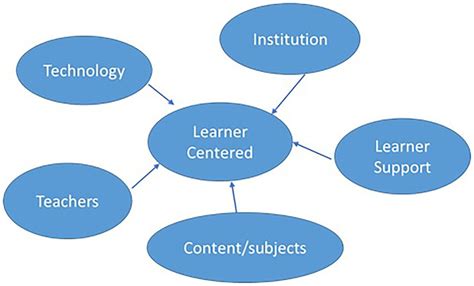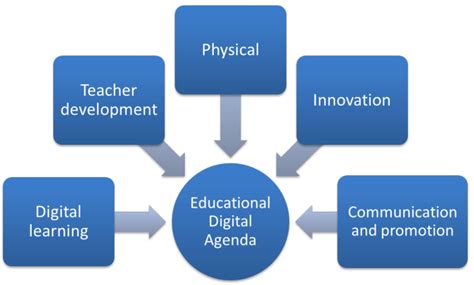The integration of technology in education has revolutionized modern teaching methods, creating dynamic and interactive learning environments. From early tools like overhead projectors to today’s sophisticated digital platforms, technology has continually reshaped how educators teach and students learn. This article explores the evolution of educational technology, highlighting current trends and their impact on student engagement. By examining successful case studies, addressing challenges, and considering the future of EdTech, we aim to provide a comprehensive analysis of how technology enhances learning. Additionally, we’ll discuss the importance of teacher training and ongoing professional development to maximize the benefits of these innovations.
electrapk.com invites you to delve into this topic thoroughly.
1. Historical Context of Technology in Education
The integration of technology into education has a long and rich history, stretching back to the early 20th century. Initially, tools like radio and film were introduced as innovative ways to supplement traditional teaching methods. By the mid-20th century, overhead projectors and language labs became common fixtures in classrooms, offering more visual and auditory learning experiences. The arrival of personal computers in the 1980s marked a significant shift, enabling individualized learning and computer-assisted instruction. As the internet became more accessible in the 1990s, educational resources expanded dramatically, giving rise to e-learning platforms. Each technological advancement has contributed to a gradual transformation in teaching methodologies, paving the way for the highly digital and interactive classrooms of today. Understanding this historical context is essential, as it highlights the progressive nature of educational technology and sets the stage for analyzing current trends and future innovations in teaching and learning.

2. Current Trends in Educational Technology
Educational technology is undergoing rapid evolution, transforming the learning landscape. Interactive whiteboards have replaced traditional chalkboards, while cloud-based solutions provide ubiquitous access to educational resources. Learning management systems (LMS) such as Google Classroom and Canvas streamline coursework organization, progress tracking, and communication between educators and students. Artificial intelligence has fueled the development of adaptive learning platforms, personalizing instruction based on individual student needs. Immersive learning experiences in subjects like history, science, and art are now possible with virtual and augmented reality technologies. Gamification techniques have been integrated into educational software, making learning more engaging and interactive. The widespread adoption of mobile devices has extended learning beyond the classroom, with apps and online resources offering continuous access to knowledge. These trends underscore a growing emphasis on personalized, student-centered learning environments that leverage technology to enhance teaching and learning outcomes.

3. Impact of Digital Tools on Student Engagement
Digital tools have revolutionized student engagement, creating a more interactive and personalized learning experience. Multimedia content like videos, animations, and simulations make complex concepts easier to grasp and cater to a variety of learning styles. Interactive platforms such as Kahoot and Quizlet introduce gamified learning through quizzes and games, fostering a competitive yet collaborative environment that encourages active student participation.
Furthermore, digital tools facilitate real-time feedback, providing students with immediate insight into their errors and fostering learning from them. This rapid feedback loop helps sustain student engagement and promotes ongoing progress. Online discussion platforms and collaborative tools like Google Docs encourage peer interaction, transforming learning into a more social experience and cultivating a sense of community among students.
Adaptive learning technologies create personalized learning paths that cater to individual student needs. This allows learners to progress at their own pace, boosting motivation as they witness direct progress in areas where they may struggle. By making learning more interactive, personalized, and responsive, digital tools have significantly increased student engagement.

4. Case Studies of Successful Technology Integration
The successful integration of technology in education is evident through numerous case studies in various educational settings. For instance, the Flipped Classroom model, which has gained widespread adoption, replaces traditional lectures with video lessons students can access at their own pace. This approach facilitates more interactive and hands-on activities during class time, ultimately leading to enhanced student comprehension and engagement.
One school district took the initiative of providing every student with a tablet or laptop through a 1:1 device program. This program ensured equal access to digital resources, while also creating a learning environment tailored to each individual student. Teachers were able to assign work that was specific to each student’s needs, track their progress in real time, and provide instant feedback.
Moreover, several schools have successfully incorporated virtual reality (VR) into their academic programs, especially in fields such as history and science. VR provides students with an immersive platform to witness historical occurrences or investigate intricate scientific ideas, fostering deeper comprehension and knowledge retention. These real-world examples highlight the revolutionary potential of technology when strategically integrated into the educational landscape.
5. Challenges and Barriers to Implementing EdTech
Educational technology offers numerous advantages, yet its effective implementation can be hampered by several challenges. One major barrier is the digital divide, which arises from unequal access to technology. While some schools are well-equipped with devices and high-speed internet for all students, others lack the resources to even meet basic technological requirements. This disparity leaves students in underserved areas at a significant disadvantage.
A significant hurdle lies in the resistance to change among educators. Some teachers may be hesitant to embrace new technologies due to unfamiliarity or a lack of confidence in their ability to integrate these tools effectively into their teaching practices. This resistance is frequently exacerbated by insufficient professional development opportunities, leaving educators without the necessary training to fully leverage digital tools in their teaching.
Furthermore, the financial burden of adopting and supporting EdTech solutions can be substantial, particularly for schools with constrained budgets. Acquiring devices, subscribing to software programs, and guaranteeing the continuous upkeep of these technologies necessitate considerable financial resources.
The widespread adoption of EdTech is also hindered by concerns over privacy and data security. As reliance on digital platforms grows, so does the risk of data breaches, raising anxieties about the safeguarding of students’ personal information.
Overcoming these challenges necessitates a multifaceted strategy. This approach must include ensuring equitable access to technology, providing ongoing professional development for educators, offering adequate financial support, and implementing robust data security measures.
6. Teacher Training and Professional Development
Success in integrating technology into education relies on teachers’ ability to use digital tools confidently and creatively. Teacher training and professional development are essential to equip educators for the constantly changing world of educational technology. Comprehensive training programs should encompass not just the technical skills needed to use new tools but also pedagogical strategies for seamlessly incorporating technology into the curriculum in a meaningful way.
Continuous professional development is crucial for educators to remain informed about the latest technological advancements and educational trends. Through workshops, online courses, and peer mentoring, teachers can explore innovative teaching methods and share best practices. Moreover, hands-on training simulating real classroom situations empowers teachers to confidently utilize digital tools, leading to more engaging and effective learning experiences for their students.
School support systems, including tech coaches and instructional technology specialists, are crucial for guiding teachers in integrating technology into their teaching practices. By prioritizing teacher training and professional development, schools can empower educators to maximize the potential of technology and enhance student learning.
7. Future Directions and Innovations in Educational Technology
Educational technology’s future holds exciting advancements that will revolutionize the teaching and learning process. Emerging technologies like artificial intelligence (AI) and machine learning are set to revolutionize personalized learning by tailoring educational experiences to individual student needs. AI-powered tools can dynamically adjust to a student’s requirements, providing personalized resources and feedback that target specific learning gaps.
Virtual reality (VR) and augmented reality (AR) hold the potential to transform experiential learning, enabling students to delve into historical events, scientific phenomena, and complex concepts within immersive environments. These technologies can bridge the gap between abstract concepts and tangible understanding, engaging students in interactive and captivating experiences.
Blockchain technology has the potential to transform credentialing and academic records, offering a secure and verifiable way to store digital diplomas and transcripts. This could streamline administrative processes while simultaneously enhancing the integrity of academic records.
Furthermore, the growth of educational platforms and apps will likely persist, providing innovative methods for content delivery and collaboration. Gamification and adaptive learning systems will continue to boost student engagement by integrating game-like features into educational activities.
In the face of advancing technology, striking a balance between innovation and ethical considerations like equity, data privacy, and accessibility will be paramount. By embracing these future directions, we can enrich the educational experience, creating more personalized, interactive, and effective learning environments.
Incorporating technology into education has significantly transformed teaching and learning, offering new opportunities for engagement and personalized instruction. While challenges such as the digital divide, resistance to change, and costs remain, the benefits of technology are profound. By addressing these barriers through comprehensive training, ongoing support, and innovative solutions, educators can harness the full potential of EdTech. Looking ahead, continued advancements promise to further enhance educational experiences, making learning more dynamic, accessible, and effective for all students.
electrapk.com
